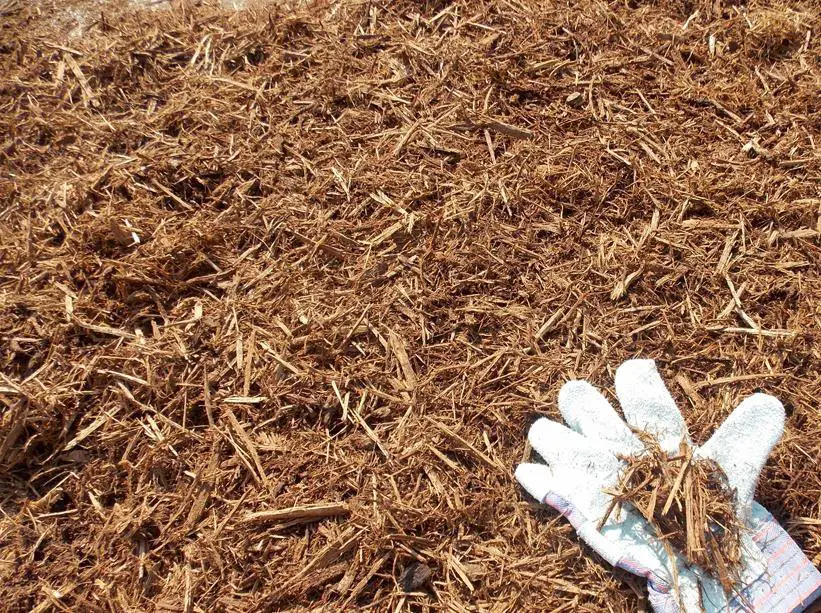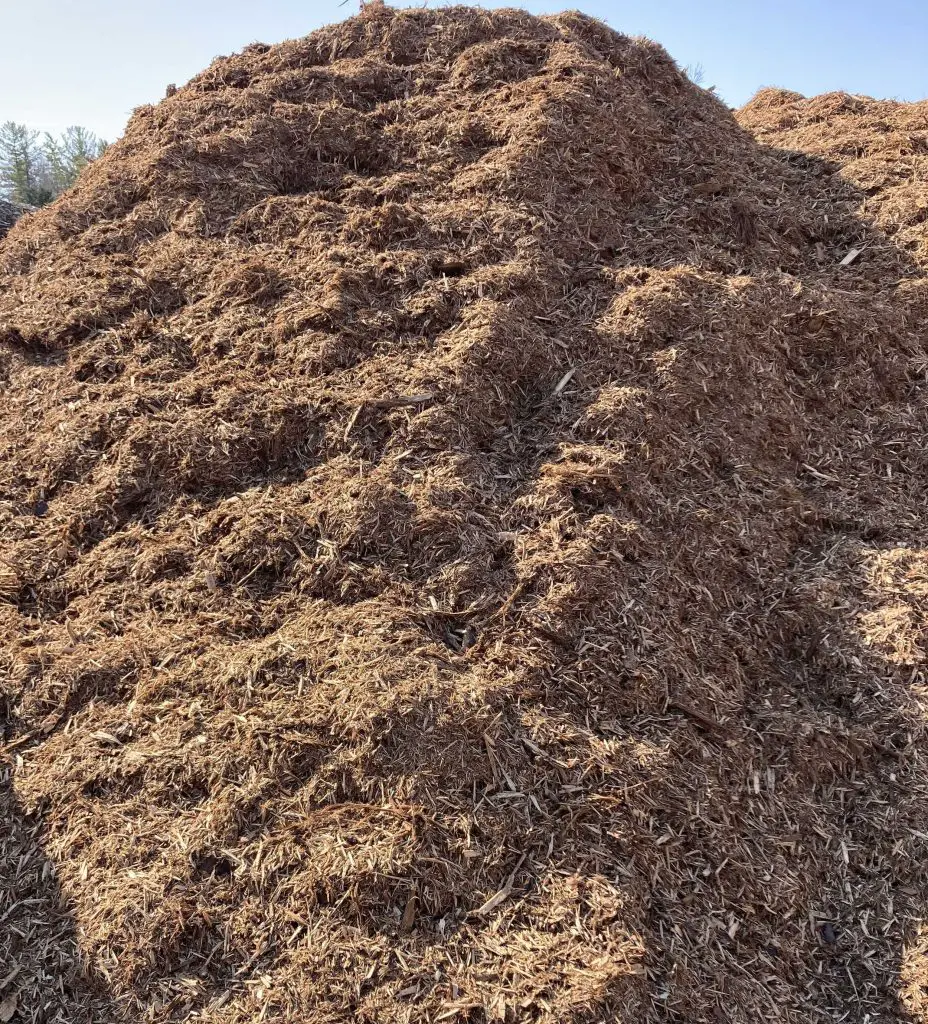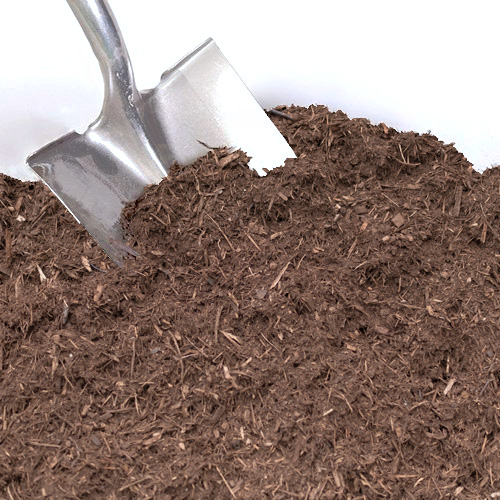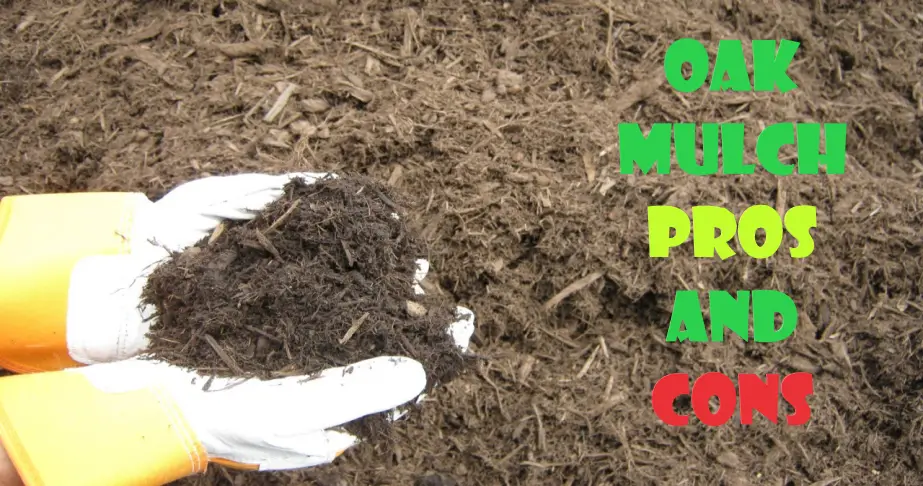Oak mulch is a type of organic mulch derived from the bark, leaves, and branches of oak trees.
It offers a natural and visually appealing option for enhancing garden beds, pathways, and other outdoor spaces.
Different varieties of oak mulch are available, including shredded, chipped, or finely ground options, allowing you to choose the texture that suits your preferences.
Oak mulch has gained significant popularity among gardeners and landscapers for its numerous benefits.
However, it’s essential to understand both the pros and cons of using it to make informed decisions for your garden or landscape.
Oak Mulch Benefits (Pros)
Weed Suppression and Prevention
One of the primary benefits of oak mulch is its ability to suppress and prevent weeds.
By creating a barrier that limits sunlight, it inhibits weed growth, reducing the need for herbicides and minimizing maintenance efforts.
Moisture Retention and Soil Insulation
Oak mulch acts as an excellent moisture retainer, reducing water evaporation from the soil and helping plants stay hydrated.
It also acts as a protective layer, insulating the soil against extreme temperature fluctuations.
Nutrient Enrichment and Soil Improvement

As the mulch decomposes, it slowly releases essential nutrients into the soil, enriching it and promoting healthy plant growth.
Moreover, as it breaks down, it enhances soil structure, aeration, and drainage.
Related: Root Mulch vs. Hardwood Mulch
Erosion Control and Soil Conservation
The thick layer of oak mulch helps prevent soil erosion by reducing water runoff and the impact of heavy rain. This is particularly beneficial for sloped areas or gardens susceptible to erosion.
Aesthetic Appeal and Natural Look
Oak mulch adds a natural and organic touch to your garden or landscape, creating a visually appealing environment. Its earthy tones blend well with various plantings and architectural elements.
Deterrence of Pests and Diseases
Certain types of oak mulch, particularly those with a higher tannin content, can act as a natural deterrent against pests like slugs and snails.
The mulch can also help suppress the growth of some fungal diseases.
Oak Mulch Drawbacks (Cons)
Initial Cost and Installation Challenges
Compared to other mulch options, oak mulch may have a higher initial cost.
It also requires proper installation techniques, including the use of landscape fabric or weed barriers, which can add to the overall expense.
Potential for Nitrogen Tie-Up and Nutrient Imbalances
During the decomposition process, the mulch may temporarily tie up nitrogen in the soil, which can affect the availability of this vital nutrient for plants.
To mitigate this, supplementing with nitrogen-rich fertilizers or choosing a well-aged oak mulch can help maintain a balanced nutrient profile.
Risk of Fungal Diseases and Decay
In humid or wet climates, oak mulch can create a favorable environment for fungal diseases, such as root rot or mold.
To prevent these issues, proper spacing between plants, good airflow, and regular inspections are essential.
It’s also important to ensure that the mulch is well-drained and not excessively compacted.
Attraction of Termites and Other Pests
While oak mulch does deter certain pests, it can attract others, such as termites.
If termite infestations are prevalent in your area, using oak mulch near structures or wooden elements may pose a risk.
Regular inspections and appropriate pest control measures are recommended.
Possible Allelopathic Effects on Certain Plants
Some oak species release chemical compounds that inhibit the growth of certain plants.
While this allelopathic effect is generally minimal with oak mulch, it’s important to be aware of potential interactions if you have specific plant species that may be sensitive to these compounds.
Considerations for Allergy Sufferers
It may cause allergies in individuals who are sensitive to oak pollen or have respiratory issues.
If you or someone in your household has known allergies, it’s advisable to exercise caution or explore alternative mulch options.
Related: Hemlock vs. Pine Mulch
Factors to Consider When Choosing Oak Mulch

Several factors should be taken into account when deciding whether to use oak mulch.
Garden or Landscape Goals and Specific Needs
Consider your overall objectives, such as weed control, soil improvement, or aesthetic appeal.
Assess how the mulch aligns with these goals and whether alternative mulches may better suit your specific needs.
Local Climate and Weather Conditions
Evaluate your region’s climate, including average rainfall, temperature extremes, and humidity levels.
Oak mulch may perform differently in different climates, so understanding your local conditions will help determine its suitability.
Plant Types and Compatibility with Oak Mulch
Certain plant species may thrive or struggle when grown with oak mulch.
Research the compatibility of your desired plants with the mulch and consider any potential interactions or sensitivity they may have.
Availability and Cost Considerations
Take into account the availability of the mulch in your area and its associated cost. Consider alternative mulch options that may be more readily accessible or cost-effective.
Maintenance Requirements and Personal Preferences
Evaluate its maintenance requirements, such as the need for periodic replenishment or maintenance to prevent issues like fungal growth.
Consider your willingness to invest time and effort in maintaining it versus other mulch choices.
Related: Top 8 Mulches for Citrus Trees in Pots
Tips and Tricks for Using Oak Mulch
Follow these best practices to make the most of your mulch.

Correct Application Techniques and Depth
Apply oak mulch to a depth of 2 to 4 inches, ensuring that it covers the soil surface adequately.
Avoid piling mulch against plant stems or trunks to prevent moisture retention and potential rot.
Timing and Frequency of Mulch Application
Apply your mulch in the spring or fall when the soil is adequately moist and temperatures are moderate. Replenish it as needed, typically every one to two years, to maintain the desired depth.
Proper Mulch Maintenance and Renewal
Regularly inspect the mulch for signs of fungal growth, decay, or excessive compaction.
Remove any affected areas and replace them with fresh mulch.
Raking or fluffing the mulch periodically will help maintain its appearance and performance.
Precautions for Preventing Issues with Oak Mulch
To mitigate potential problems, such as nitrogen tie-up or fungal diseases, incorporate nitrogen-rich fertilizers when necessary and maintain proper drainage and airflow in the garden or landscape.
Related
- Best Gravels to Walk on Bare Feet
- 10 Best Mulch for Wet Areas
- Top 10 Wholesale Mulch Suppliers
- Top 7 Disadvantages of Decomposed Granite
- Gorilla Hair Mulch Pros and Cons
- Best Mulch for Perennials
- Grass Mulching Pros and Cons
- Hemlock vs Fir Mulch: A Comprehensive Comparison Guide
- Is Cedar Mulch Good for Fruit Trees? Yes, here’s why
- Hemlock vs. Pine Mulch: Side-by-Side Comparison


